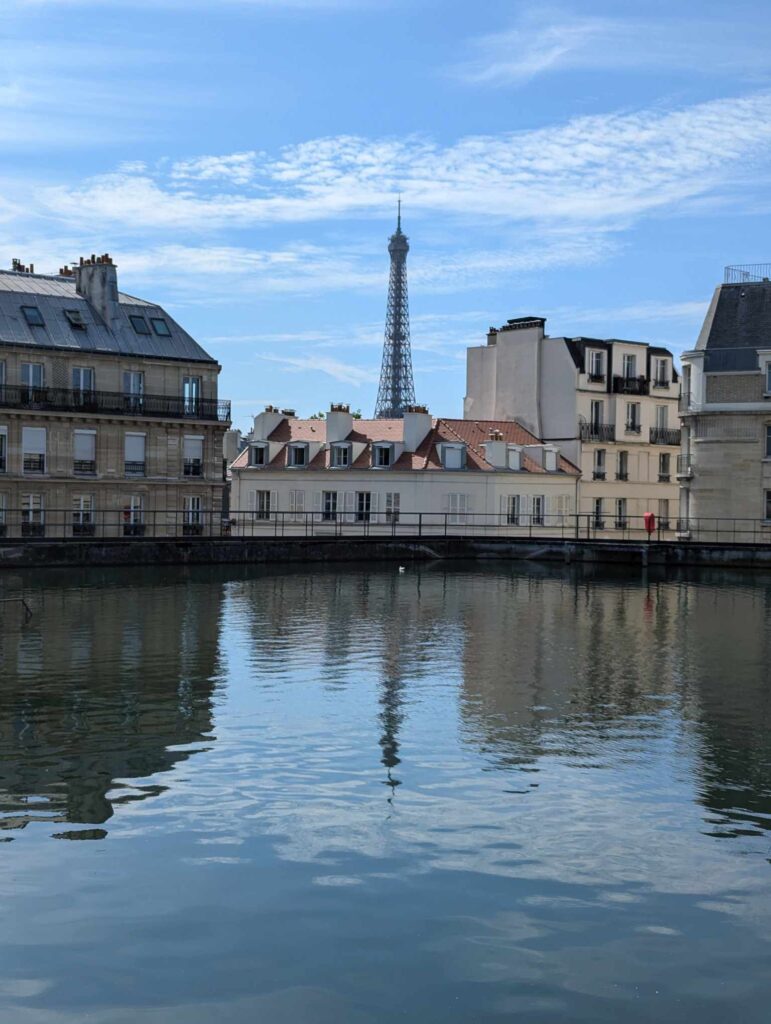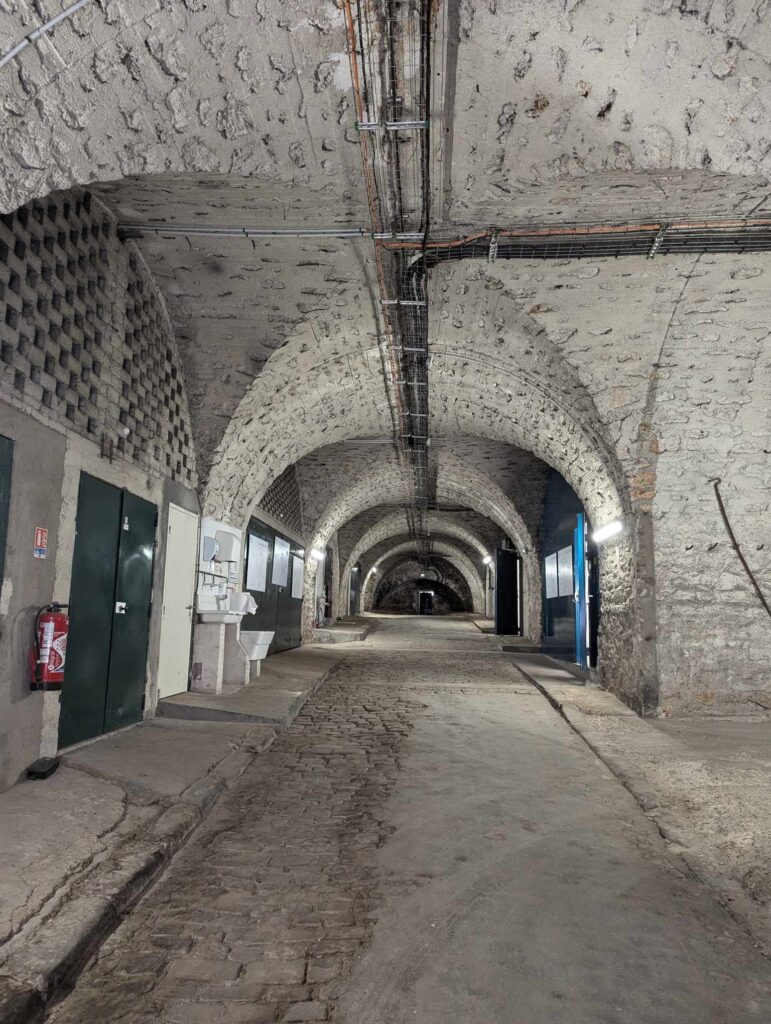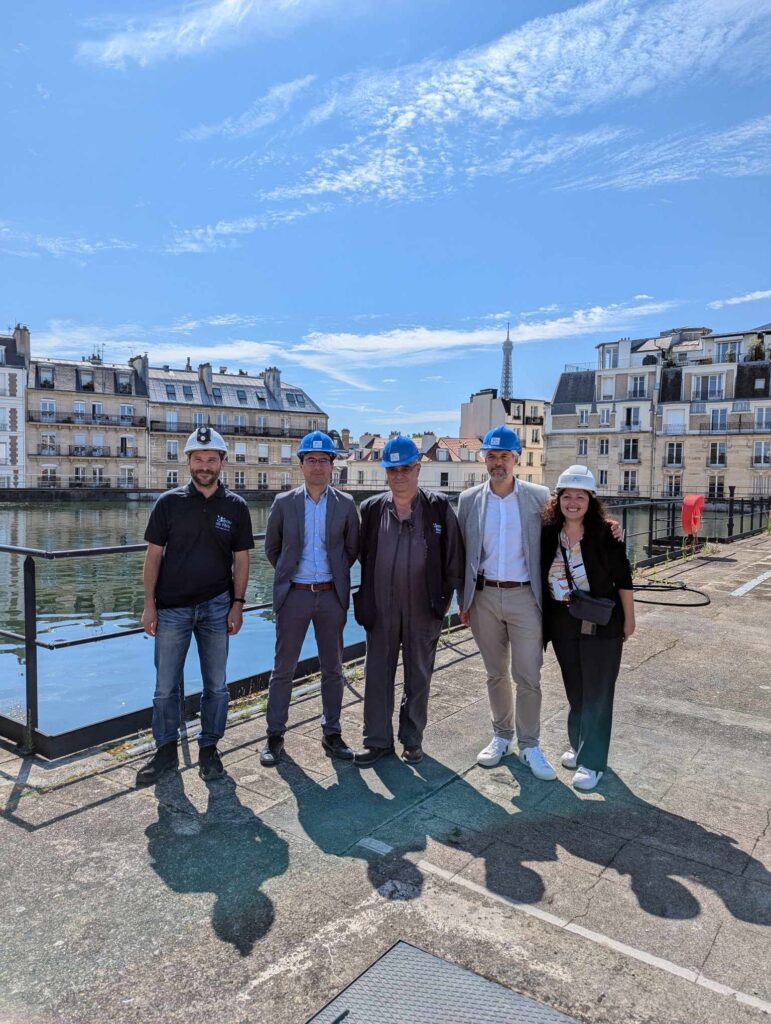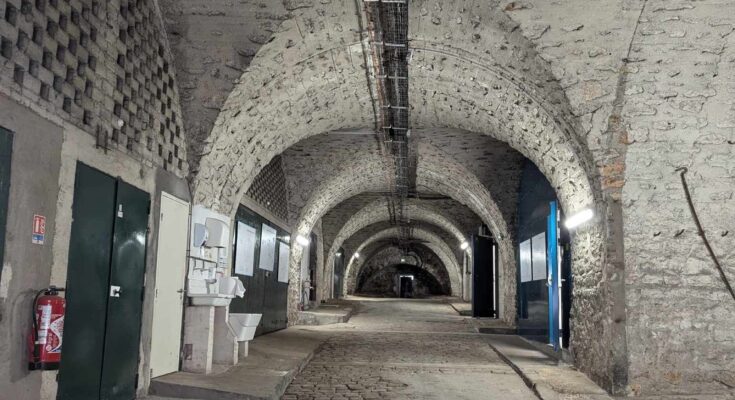Although the Passy Reservoir is generally closed to the public, it occasionally opens its doors for special events such as the European Heritage Days. Those fortunate enough to visit this exceptional site are often struck by the grandeur and beauty of its architecture, reminiscent of catacombs or medieval crypts. These visits provide a unique opportunity to discover the workings of Paris’s water network and to understand the importance of the hidden infrastructure that supports the daily life of Parisians, who consume around 500,000 m³ of water per day.

At the end of the 19th century, Paris established a dual water network, for both potable and non-potable water. The policy of diverting and elevating water from the Seine and the Ourcq canal led to the creation of large reservoirs, including the Passy Reservoir, one of the main storage sites for non-potable water in the capital. Located in the heart of the 16th arrondissement, this reservoir is half-buried and open to the sky, resembling an artificial lake surrounded by Haussmannian buildings.

Built in 1858 and operational from 1866, the Passy Reservoir was designed by engineer Eugène Belgrand and consists of two levels of basins. The first level, called « Villejuste, » covers an area of approximately 2,400 m², consisting of two superimposed basins covered by a grassy slab. Its supporting structure, with vaulted compartments, has a total volume of about 17,000 m³, with heights reaching up to 6 meters under the vault. The second level, named « Bel-Air, » also includes two superimposed basins, with a total volume of about 15,000 m³, with the upper level open to the sky. Another basin, known as the « fire reserve, » is part of the original Passy Reservoir. It is a single-level basin covering 720 m², with a volume of about 3,500 m³.
In 1898, a new compartment, « Copernic, » was added, also open to the sky, bringing the total storage capacity of the reservoir to 57,000 m³. This reservoir primarily supplies non-potable water to the 16th arrondissement and to the lakes, rivers, and waterfalls of the Bois de Boulogne.
In 1900, the main Passy Reservoir was supplied by the Chaillot pump. Today, it receives water from the Ourcq Canal, pumped from the Villette plant (in the 19th arrondissement) via an 80 cm diameter pipe. Since 2020, and continuing until 2026, a €36 million investment has been allocated for the modernization of the non-potable water network.





